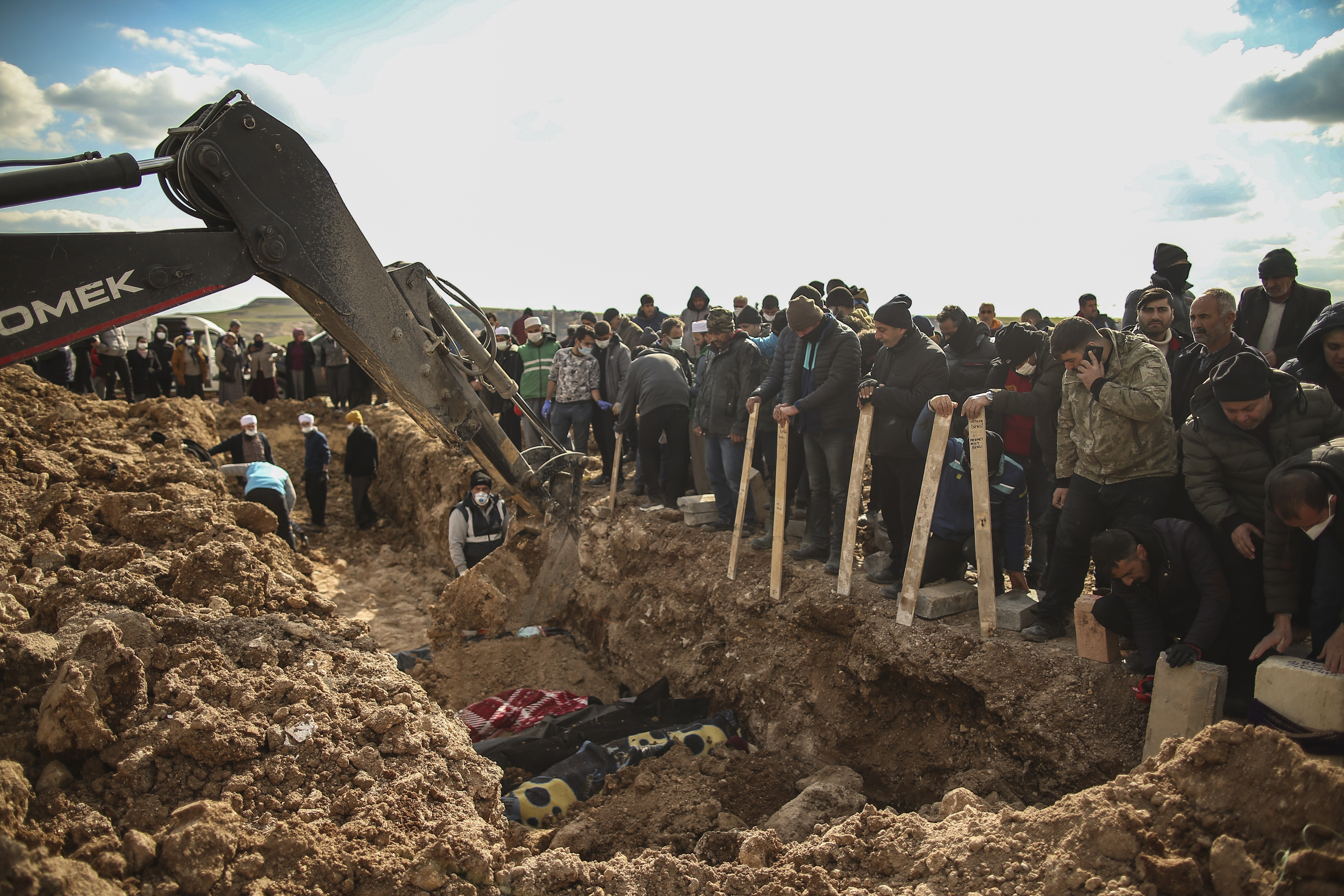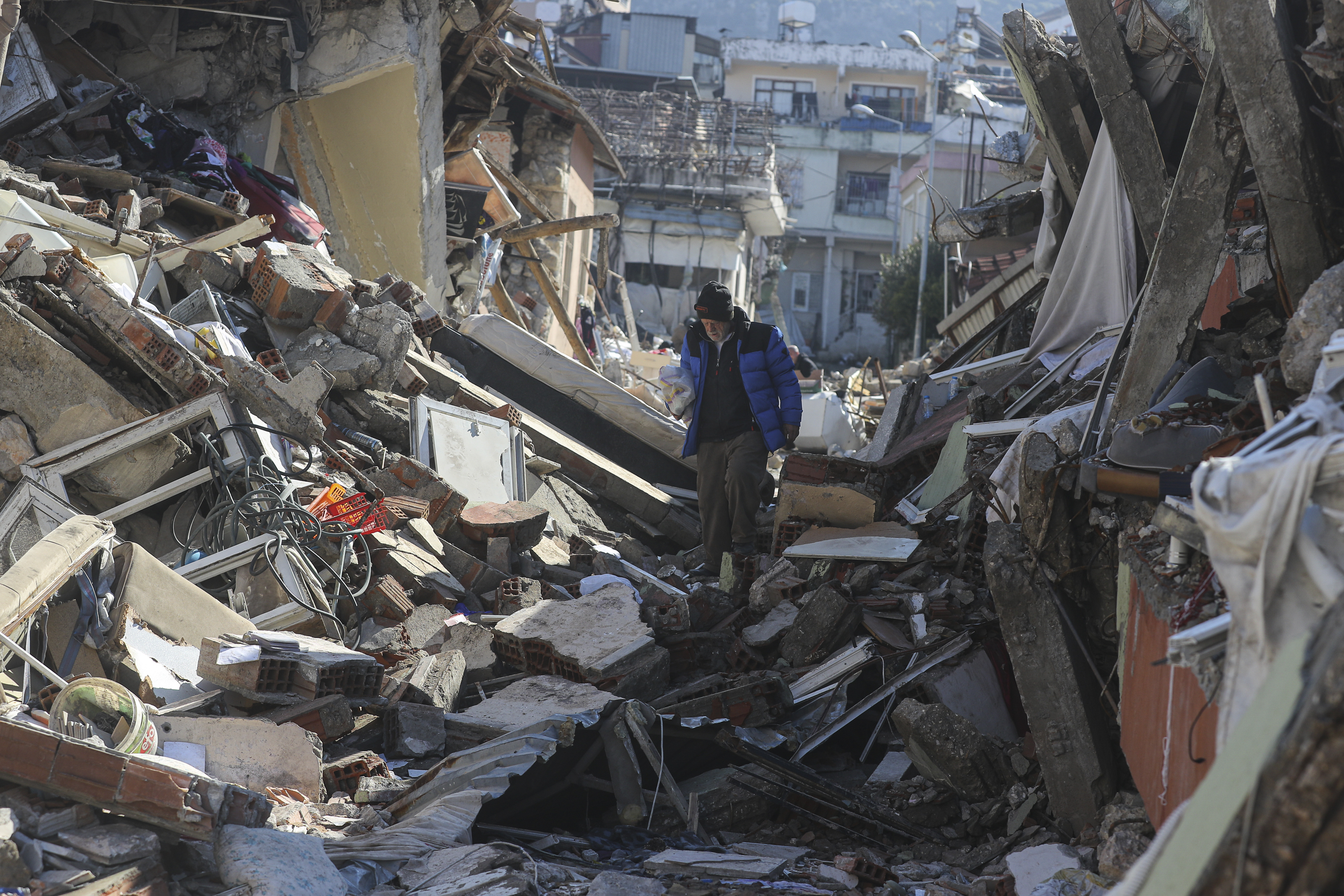
The situation in Turkey and Syria after the deadly earthquake on February 6 with tens of thousands of dead can be described differently as tragic.
Six days after two major earthquakes rocked eastern Turkey, one of the worst natural disasters the country has experienced in its modern history, the death toll has risen to over 21,000, while in Noordayi and cities in southern Turkey and northern Syria the dimensions of the destruction are indicative.
Grief and mourning are replaced by despair and terrible practical measures for relatives and friends, identification of the dead, mass graves, searches for places in local cemeteries.
At the Nurdaghi cemetery in the province of Gaziantep, the place for the young dead is running out. The freshly dug graves have white tombstones, and the only thing that identifies the deceased is a piece of his clothing.
Outside the gates of the cemetery, dozens of bodies are piled one on top of another in carts, waiting for a place and time for burial. At least five imams arrived in the city for mass and summary burials, often up to ten victims at a time.
“Forty percent of the people who lived in this city may have been killed,” said Sadiq Gunesh, an imam in Nurdagi. The mosque where he worked also collapsed. And without a place to pray, mass funerals in the city, as well as in the rest of the affected areas of southern Turkey, take place in the countryside.
Dumped corpses and dismembered corpses
“I have lost count of the dead we have buried since Monday. We built an extension to the cemetery. But there are still people under the rubble. We will also bury them when they recover. We bury the bodies even late at night, with the help of the townspeople who rush to help,” he describes.

While waiting for coroners, prosecutors and other experts, residents in some cities have piled up the victims’ bodies in stadiums or parking lots to allow relatives to identify them before a death certificate is issued.
In the city Kahramanmarasrescuers are still looking for people, dead or alive, under the rubble, but in many cases they find only parts of the bodies of the dead.
One rescuer described how she carried an amputated upper limb among mourners in the hope that someone would recognize the deceased by her nail polish.
“I dug into the rubble with my own hands and pulled out the dead mother and father. Then I had to bury them again with my hands,” says Sadi Utsar, a resident of the district.
V Afrin in northwestern Syria, the cemetery had to be improvised with the creation of mass graves.
In my city Osmaniathe place in the cemetery ran out, and outside Kahramanmaras, near the epicenter, there were so many victims that pieces of wood and cement from the debris were used as makeshift tombstones.
Memories of the civil war in the ruins of an earthquake
IN ginger (Gindaros), a city full of displaced Syrians after a decade of civil war, refugees in their country who escaped shelling and chemical attacks, the earthquake brought back memories of death and persecution.

“The memories came back when the whole city was destroyed, I had the same situation, it reminded me of my seven brothers who died when our building collapsed after an air raid. And now my heart breaks again that I again had to dig in the ruins of Jidires for my brothers and my family,” says Abu Majed al-Saar, a resident of the city.
Razed to the ground more than 100 buildings in this city. “I was shocked by the horror of this scene. The devastation he has caused in the city is terrible,” says Yasser Abu Amar, a member of the White Helmets.
Despite the despair, hope is not lost. In the silence now and then, less often over time, a distant voice is heard, deep under tons of cement, which intensifies the efforts of rescue teams, brings tears and smiles to the faces of relatives and citizens, but above all, revives hopes of finding others alive.
The joy passes quickly before silence settles again on the cement blocks that were people’s homes a few days ago.
Source: Guardian
Source: Kathimerini
Anna White is a journalist at 247 News Reel, where she writes on world news and current events. She is known for her insightful analysis and compelling storytelling. Anna’s articles have been widely read and shared, earning her a reputation as a talented and respected journalist. She delivers in-depth and accurate understanding of the world’s most pressing issues.